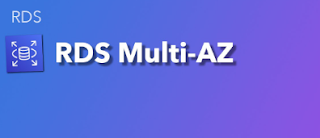Exploring Multi-AZ RDS: Enhancing Availability with Amazon’s Relational Database Service.
Introduction to Multi-AZ RDS
In the realm of cloud-based database solutions, Amazon RDS shines as a leading service, offering managed relational databases with ease of setup and scalability.
However, for applications demanding high availability and resilience to failures, Multi-AZ (Availability Zone) RDS configurations emerge as a critical tool.
Let’s dive into the depths of Multi-AZ RDS to uncover how it fortifies your infrastructure against downtime and data loss.
Understanding Multi-AZ RDS
Amazon RDS Multi-AZ deployment is a feature designed to enhance the availability and durability of your relational database instances.
It achieves this by synchronously replicating your primary database instance to a standby instance located in a different Availability Zone within the same AWS Region.
Key Differences Between RDS and Multi-AZ RDS:
1.High Availability: Unlike standard RDS setups, Multi-AZ configurations provide automatic failover to the standby instance in the event of a hardware failure, maintenance event, or AZ outage, ensuring uninterrupted access to your data.
2.Data Durability: By replicating data synchronously to a standby instance, Multi-AZ RDS ensures data redundancy and minimizes the risk of data loss in the face of infrastructure failures.
Advantages of Multi-AZ RDS
- Automatic Failover:
Multi-AZ RDS automates the process of detecting and replacing the primary instance with the standby instance in case of failure, reducing downtime and ensuring business continuity.
2. Enhanced Availability:
With standby instances located in different Availability Zones, Multi-AZ deployments provide higher availability compared to single-instance setups, making them suitable for mission-critical applications.
3. Improved Disaster Recovery:
Multi-AZ RDS configurations serve as a robust disaster recovery solution, allowing applications to withstand AZ-level failures and maintain operations without interruption.
How Multi-AZ RDS Works
In a Multi-AZ deployment, your primary database instance serves read and write requests, while a standby instance mirrors the primary instance’s data in real-time.
Synchronous Replication:
Changes made to the primary instance are synchronously replicated to the standby instance, ensuring data consistency and durability.
Automated Failover:
AWS automatically promotes the standby instance to the primary role in the event of a failure or maintenance event affecting the primary instance, minimizing downtime.
Conclusion
Amazon RDS Multi-AZ configurations offer a robust solution for businesses seeking high availability and data durability in their relational databases.
By leveraging synchronous replication and automatic failover across multiple Availability Zones, Multi-AZ RDS ensures that your applications remain resilient to failures and disruptions, allowing you to focus on delivering exceptional experiences to your users without worrying about infrastructure reliability.


0 Comments